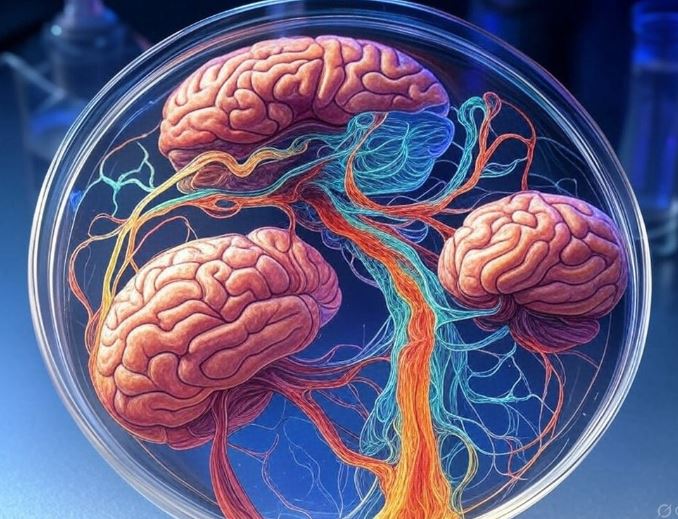In a remarkable scientific breakthrough, researchers at Stanford University have successfully constructed a complete pain-sensing neural pathway in a laboratory dish using human cells. This pioneering achievement, announced on April 10, 2025, marks the first time such a complex biological system has been replicated outside the human body, opening new doors for medical research and treatment development.
The Stanford-led team accomplished this feat by creating an innovative structure called an “assembloid.” This assembloid integrates four distinct types of brain and spinal organoids, all cultivated from reprogrammed human skin cells. These organoids—miniature, simplified versions of organs—were carefully engineered to connect naturally, mirroring the intricate pathway that transmits pain signals from the skin to the brain in a living human body.
Also Read: US to Reevaluate Fluoride in Drinking Water Amid Health Concerns
To test the functionality of their lab-grown circuit, the scientists exposed it to capsaicin, the fiery compound responsible for the heat in chili peppers. Astonishingly, the assembloid responded as a real nervous system would, activating in a way that closely resembled the body’s natural pain response. This demonstrated that the recreated pathway is not just a static model but a dynamic system capable of processing stimuli.
The implications of this breakthrough are profound. Using CRISPR gene-editing technology, the team also modified the assembloid to replicate genetic pain disorders, providing a powerful tool for studying chronic pain conditions that affect millions worldwide. This advancement could revolutionize drug testing by offering a human-cell-based platform to evaluate new treatments, potentially reducing reliance on animal models and accelerating the development of therapies.
Stanford’s innovation promises to deepen our understanding of pain mechanisms and pave the way for personalized medicine, offering hope to those suffering from debilitating pain disorders.
key Points:
- Breakthrough Achievement: Stanford University scientists have recreated a complete pain-sensing neural pathway in a lab dish using human cells, a first in scientific research.
- Method: The team developed an “assembloid” by combining four types of brain and spinal organoids, grown from reprogrammed human skin cells.
- Functionality: The assembloid mimics the natural pain pathway from skin to brain, forming connections organically.
- Testing: When exposed to capsaicin (chili pepper compound), the lab-grown circuit activated like a real nervous system, proving its responsiveness.
- Applications: Using CRISPR, researchers modeled genetic pain disorders, enabling study of chronic pain and potential drug testing.
- Impact: Offers a human-cell-based platform for research, potentially reducing animal testing and advancing personalized medicine for pain conditions.
- Significance: Could deepen understanding of pain mechanisms and accelerate development of new therapies for millions affected by chronic pain.



